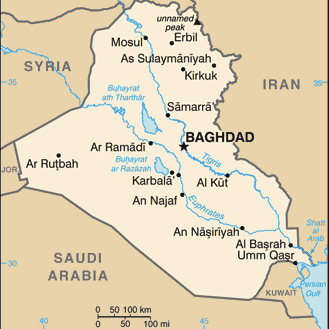After a Ford exec in a panel talk raised a (supposedly) hypothetical scenario whereby the company could collect live driving data like speed and relative location from embedded GPS and other services linked back to headquarters by satellite, and noted that it would include illegal/dangerous driving behaviors, Eugene Volokh of TVC started thinking through the legal implications of such a world. Here’s an excerpt from the piece:
Ford could technically gather this information, and could use it to prevent injuries. For instance, if GPS data shows that someone is speeding — or the car’s internal data shows that the driver is speeding, or driving in a way suggestive of drunk driving or extreme sleepiness, and the data can then be communicated to some central location — then Ford could notify the police, so the dangerous driver can be stopped. And the possibility of such reports could deter the dangerous driving in the first place.
Ford, then, is putting extremely dangerous devices on the road. It’s clearly foreseeable that those devices will be misused (since they often are misused). Car accidents cause tens of thousands of deaths and many more injuries each year. And Ford has a means of making those dangerous devices that it distributes less dangerous; yet it’s not using them.
Sounds like a lawsuit, no? Manufacturer liability for designs that unreasonably facilitate foreseeable misuse is well-established. And the fact that the misuse may stem from negligence (or even intentional wrongdoing) on the user’s part doesn’t necessarily block liability, so long as the user misconduct is foreseeable. I should note that I’m not wild about these aspects of our tort law system, and think they should likely be trimmed back in various ways; but there is certainly ample legal doctrine out there — whether one likes it or not — potentially supporting liability in such a situation.
The full piece is pretty long and gears gradually toward the technical side, for legal professionals, as it progresses, but the opening sections are for a more general audience. It’s certainly thought-provoking — the idea that companies might be able to use increasingly computerized and data-rich vehicles to monitor driving behavior and report it to the police (or to insurers, or… who knows where it ends).
Might they even make the data signals go two ways so they could control someone’s vehicle to slow them if they’re speeding out of control (or aid the police in controlling it, to stop a high-speed chase for example)? After all, some of these cars already have automated lane-finders and swerve-correctors as well as numerous other safety features. But those are locally-run by the onboard systems. Does the company have an obligation to control or report its vehicles when they’re being used dangerously or illegally? If they don’t, will they be sued? Interesting (and troubling) questions from a brave new world…



 This past week, the continental United States experienced a very deep and widespread freezing, even stretching sub-freezing temperatures as far down the latitudes as the deep American South. The more northern, higher latitudes had (depending on one’s location) windchills ranging from 15-50 degrees (Fahrenheit) below zero. In some places, exposed skin froze within a minute. Very dangerous, very cold weather.
This past week, the continental United States experienced a very deep and widespread freezing, even stretching sub-freezing temperatures as far down the latitudes as the deep American South. The more northern, higher latitudes had (depending on one’s location) windchills ranging from 15-50 degrees (Fahrenheit) below zero. In some places, exposed skin froze within a minute. Very dangerous, very cold weather.  As ethically bad as the 2014 Winter Olympics in Russia are going to be, the 2022 World Cup in Qatar is
As ethically bad as the 2014 Winter Olympics in Russia are going to be, the 2022 World Cup in Qatar is  New York Times headline today: “
New York Times headline today: “


